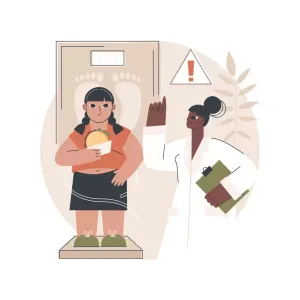

Our Review Process
Our articles undergo extensive medical review by board-certified practitioners to confirm that all factual inferences with respect to medical conditions, symptoms, treatments, and protocols are legitimate, canonical, and adhere to current guidelines and the latest discoveries. Read more.
Our Editorial Team
Shifa Fatima, MSc.
Author
Dr. Apoorva T, MHM.
MEDICAL ADVISOR
Borderline cholesterol
High cholesterol is one of the most common conditions that people all across the world are having to deal with. Earlier, the prevalence of this medical condition was seen in people over the age of 40, however, these days the rate of incidence of higher levels of cholesterol is commonly seen in teenagers as well. These statistics are a cause for alarm as it shows how increasingly prevalent it is becoming in today’s times. Cholesterol levels being elevated can come with multiple issues of their own – most of these consequences can lead to permanent damage in the form of heart attack, stroke, hemorrhage, etc. Therefore, it is important to identify and predict these issues in the early stages.
Table of Contents
What Is Borderline Cholesterol?
If you have been told that you have your cholesterol levels on the borderline, you may be wondering what that is all about. This essentially means that your levels are on the ‘borderline’ but not in the ‘high’ range. The cholesterol levels in the borderline range would be higher than the ideal scenario. The approximate value for your cholesterol to be at the borderline level would be between 200 and 239 mg/dl. Anything above 240mg/dl would be considered high cholesterol. Along with this reading, your doctor will also consider other aspects like your total cholesterol levels, LDL level, and how much of that is HDL cholesterol. Simple life changes will make it possible for you to bring down your overall cholesterol levels from borderline to normal. At times, doctors might recommend you take some medications – this will primarily be suggested if you also have other underlying conditions like diabetes, high blood pressure, poor heart health, a history of smoking, etc. Further treatment factors and testing will depend on these aspects. In certain cases, coronary artery calcium (CAC) scans might be asked for in case doctors would like to check for plaque build-up in the arteries.
Not only high levels of cholesterol but even borderline cholesterol can cause an impact on the body if it goes untreated. Take the example of the body temperature being between 99- 100 degrees Fahrenheit . Even though it may not be considered very high, it still does cause discomfort, weakness, and lethargy. Checking your levels, therefore, becomes super important so that you can stay on top of these issues and ensure that it does not become more harmful in the long run.
What causes borderline cholesterol?
Borderline high cholesterol also travels through the bloodstream as it is a lipid. In case this level of cholesterol is in excess, the body may not be able to process the lipoprotein. These molecules will stick to the walls of the arteries and may harden to form plaque. This causes a restriction in the arterial walls leading to heart disease. Borderline cholesterol levels form a “at-risk” stage wherein a person might develop higher cholesterol levels eventually in their body and other forms of heart conditions too.
What are borderline high cholesterol symptoms?
Borderline cholesterol symptoms may not be explicit and apparent. In most cases, borderline levels of cholesterol may actually become obvious when they cause emergency events. These emergencies could be a heart attack, stroke, etc. These events may not occur until the levels of cholesterol are high enough for them to form plaque in the arteries. The build-up of plaque can lead to the narrowing down of the arteries due to which less blood will pass through them. It can also alter the arterial lining which can result in serious complications.
The only way to understand if the cholesterol levels in the body are too high would be with the help of blood tests. To diagnose cholesterol at the borderline level, the levels should be between 200mg/dl and 239mg/dl. This test can be done every 4-6 years. A doctor may recommend getting your cholesterol levels checked more frequently if you have a family history of high cholesterol. Additionally, with the presence of risk factors like:
- High blood pressure
- Being overweight
- Smoking, etc can also lead to a higher risk of borderline levels
Being aware of the risk factors like genetics, diet, lifestyle, medical illnesses, etc can also lead to an overcomplication of symptoms.

Recommended cholesterol levels
Apart from aging, changes and an increase in cholesterol levels can usually be a result of other conditions and lifestyle factors. Knowing what level of borderline cholesterol you are at will be beneficial. To understand the same, it will be vital to know the precise range in which your cholesterol levels should lie.
Your doctor will categorize these levels as high, low, borderline, or optimal (healthy). For adults:
1. Total cholesterol
- Healthy - numbers below 200mg/dl are considered healthy for adults
- Borderline – a reading between 200mg/dl and 239 mg/dl is described to be in the borderline range
- High – if the reading is at least 240mg/dl it is regarded as high cholesterol.
2. LDL cholesterol
- Healthy – ideally, LDL levels should be below 100mg/dl. Not much concern will be expressed about levels between 100-129mg/dl for people with no health issues, however, for people with a risk of heart disease, it may require treatment.
- Borderline – A reading between 130-159mg/dl would be a slight cause for concern.
- High – cholesterol levels between 160-189mg/dl are high
- Very high – If your reading is 190mg/dl or higher, you might need immediate intervention
3. HDL cholesterol
The higher the HDL levels, the better it is as this is the type of cholesterol that is helpful for a person
- High risk – Less than 40mg/dl of HDL cholesterol can put the person at higher risk of heart disease
- Borderline low – 41-59mg/dl is the reading that is considered borderline low
- Optimal levels – a reading of 60mg/dl is optimal.
Normal cholesterol levels by age chart
Higher cholesterol is more than 200mg/dl. However, these can further be broken down into borderline or near-optimal levels that can help get a better insight into the results. If you know your results, it will be easier for you to be able to get your levels as close to normal as possible.
Here is the cholesterol chart that you can refer to:
| Age | Total cholesterol | Non-HDL cholesterol | LDL cholesterol |
|---|---|---|---|
| 19 and younger | Borderline High - 170 - 199mg/dl | Borderline high - 120-144 mg/dl | Borderline high – 110-129 mg/dl |
| High – 200+mg/dl | High – 145+ mg/dl | High – 130+ mg/dl |
| Age | Total Cholesterol | Non-HDL cholesterol | LDL cholesterol |
|---|---|---|---|
| 20 and older | Borderline High – 200-239 mg/dl | Near-optimal – 100-129 mg/dl | |
| High – 240+mg/dl | High – 145+ mg/dl | Borderline high – 130-159 mg/dl | |
| High – 160-189 mg/dl | |||
| Very high – 190+ mg/dl |
This chart can also be understood in the form of age and gender
| Type of cholesterol | Anyone 19 or younger | Men aged 20 or over | Women aged 20 or over |
|---|---|---|---|
| total cholesterol | less than 170 mg/dl | 125–200 mg/dl | 125–200 mg/dl |
| non-HDL | less than 120 mg/dl | less than 130 mg/dl | less than 130 mg/dl |
| LDL | less than 100 mg/dl | less than 100 mg/dl | less than 100 mg/dl |
| HDL | more than 45 mg/dl | 40 mg/dl or higher | 50 mg/dl or higher |
How to manage borderline cholesterol?
In case you take the required steps and preventative measures, you will be able to treat and improve your borderline cholesterol
1) Eat more fiber
Foods that are rich in soluble fibers (oats, apples, citrus fruits, etc) bind to the cholesterol molecules and carry them out of the body. Similarly, foods high in insoluble fibers (nuts, potatoes, etc) can make you feel full for a long time which can help with weight management
2) Omega-3
The inclusion of omega-3 fatty acids in your diet may help reduce triglyceride levels and increase HDL cholesterol. At least 2 servings of fatty fish like salmon or an omega-3 supplement can help.
3) Avoid red meat
These are high in saturated fats and cholesterol. Opt for lean-cut red meats if possible as they contain less fat
4) Low-fat dairy
Ensure that you are not consuming significant amounts of whole milk and cheese as they can be high in saturated fat. Plant-based alternatives would be healthier
5) Exercise regularly
Children, adolescents, young adults, and adults should ensure that they are staying active for at least 30-40 minutes daily. Even brisk walking or cycling can be a good source of exercise that can help burn excess fat and cholesterol
6) Maintain your weight
Obesity can affect how your body uses cholesterol as it reduces the body’s ability to remove LDL cholesterol from the blood. Losing weight, can, therefore, be one of the most significant activities to reduce your cholesterol levels.
7) Limit alcohol
Excess alcohol consumption can also increase your total cholesterol and triglyceride levels. Excess consumption can be defined as more than one drink in a day for females and 2+ drinks a day for male
8) Avoid nicotine and tobacco
Smoking cigarettes or vaping nicotine is also linked to causing significant damage to the blood vessels. It can harden the arteries and can put you at an overall risk for heart disease. Quitting smoking can boost your immune system and improve HDL and LDL cholesterol levels
9) Manage underlying medical conditions
High cholesterol, when coupled with heart disease, high blood pressure, diabetes, etc can raise the risk of heart attack or stroke. Manage the symptoms of these issues
10) Drug therapy
At times, people with borderline cholesterol may also be recommended certain medications to improve their overall levels. Statins, omega-3 supplements, vitamins, minerals, etc can be advised
Bottomline
Borderline levels of cholesterol are the stage in the lipid panel that shows cholesterol levels between 200-239mg/dl. This reading is not optimal but not dangerously high either. If left untreated, it can increase the risk of full-blown high cholesterol levels and heart disease. Since it does not have any symptoms, the best way to check for these levels would be with the help of regular testing
FAQs
1. How do you fix borderline cholesterol?
Borderline levels of cholesterol can be fixed with the help of a holistic treatment that will include a healthy diet, avoiding alcohol and smoking, and exercising regularly. Weight management is also a big part of reducing your cholesterol levels. With the help of this approach, it is possible to get the range back to normal
2. What foods to avoid if you have borderline cholesterol?
If you have a cholesterol reading between 200-239mg/dl you need to avoid certain foods that are high in fats, processed, and ones with high sugar content. Avoid red meat, whole milk, cheese, French fries, potato chips, etc as these can increase the fat and triglyceride content in the body.
3. How common is borderline cholesterol?
More than 94 million adults (over the age of 20) have borderline high cholesterol in the United States alone. This speaks to its prevalence. The rate of incidence is only expected to increase due to the sedentary lifestyle and ease of access to processed and packaged food
4. How long does it take to lower borderline cholesterol?
It may take between 3-6 months to reduce your cholesterol levels from borderline to optimal. This may depend on the type of treatment plan, diligence, and dedication of the person following it, medical history, underlying conditions, weight factors, etc.
Disclaimer
This website's content is provided only for educational reasons and is not meant to be a replacement for professional medical advice. Due to individual differences, the reader should contact their physician to decide whether the material is applicable to their case.








